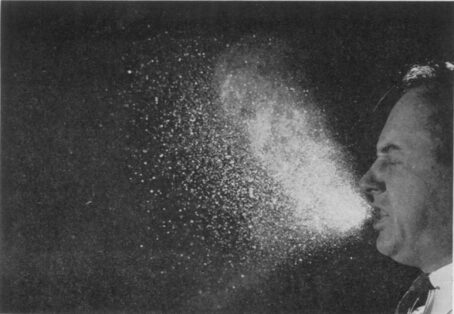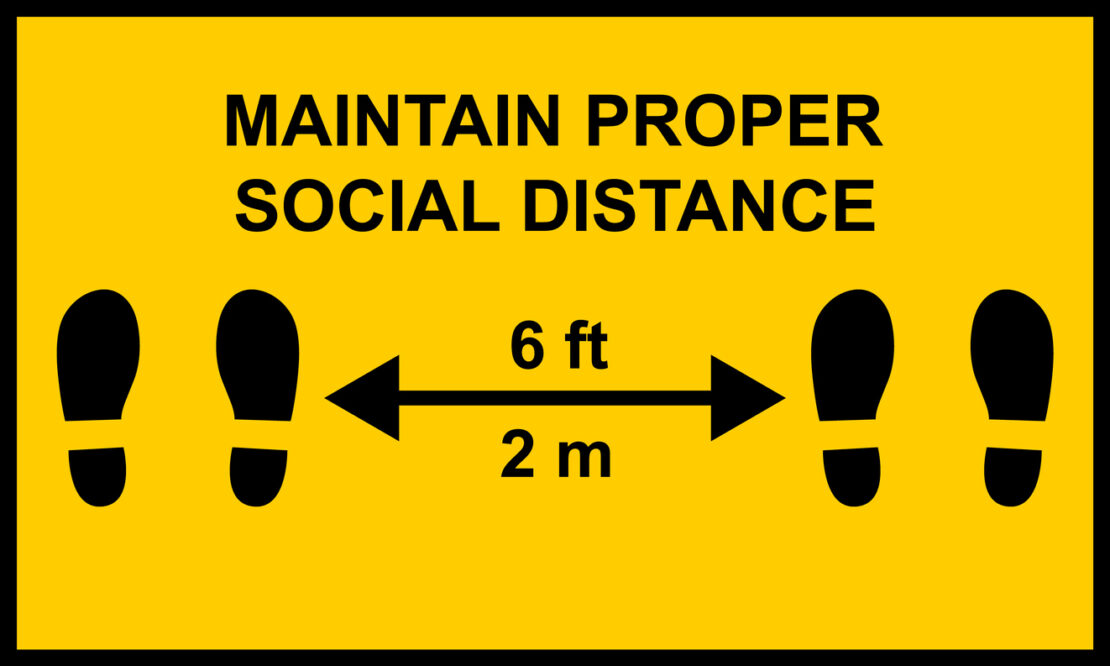The CDC tells us that if we stand at least 6 feet away from other people we will be able to avoid catching coronavirus.
Here are the exact words from CDC guidelines…
“To practice social or physical distancing, stay at least 6 feet (about two arms’ length) from other people who are not from your household.”
But this oft-repeated 6-foot rule is nonsense, according to new research that documents cases of people who caught the virus while staying well outside that distance.
In an incredibly detailed study, Korean researchers described the case of a high school student who caught the virus from a salesperson while the two were eating at the same restaurant.[1]
They sat 21 feet apart. What’s more, their visits to the restaurant overlapped by just five minutes.
Neither touched anything the other had handled. They did not speak to each other. They never walked past each other or ever got closer to each other than 21 feet.
Study Debunks Social Distancing Myth
This is not the first well-researched distancing study. An article in the journal Emerging Infectious Diseases documented how a mother and daughter caught COVID-19 while maintaining distances of nine and 10-½ feet from their infector while eating at a restaurant.[2]
What many people, or even doctors, don’t know is that the 6-foot rule is not a product of modern science. A recent article in The British Medical Journal traced it all the way back to 1940s. That’s when advances in photography allowed still-imagery of sneezing.[3]

The 6-foot coronavirus distancing rule originates from 1940s photos of sneezes.
The sneeze photos showed that droplets traveled as far as 5-½ feet. So researchers at the time figured that if you stayed 6 feet away from a sneezing person, you would not get infected.
But the photos were taken without air movement. The studies did not account for drafts caused by indoor heating and air conditioning systems. Nor did they account for tiny germ-carrying micro-droplets that are too small to be seen in photos.
Professor Jose-Luis Jimenez said that it is clear that if you are in the path of air flow from a ventilation system, you can catch coronavirus even if you are farther than 6 feet away from an infectious person. Professor Jimenez is an aerosol expert at the University of Colorado.
“If you are in the same room, you can get infected,” he said.[4]
He notes the case of a super-spreader event in Washington State. During a choir practice, a singer spread coronavirus to 52 people. The infection reached one person who was 45 feet away.
Dr. Lydia Bourouiba is author of The British Medical Journal article. She said that it’s more important to consider air flow than distance. If you are in the path of a heating or cooling duct, you may be getting a big dose of the virus, even if you are far away from the carrier.
“People have put too much weight on 6 feet as being this dividing line between risky and safe,” said Professor Linsey Marr, an environmental engineer at Virginia Tech.[5]
The farther away the better, she said. But masking, not distancing, may be a stronger weapon against infection
Read More About the Coronavirus Here
- NEW COVID TREATMENT HOPE: She lay dying of COVID-19 on a ventilator in a Buffalo hospital. Doctors gave her just a 20% chance to live. But after getting this treatment, she made “a complete turnaround,” her son said. Click HERE to read more.
- Are COVID Vaccines Safe? A new report provides detailed side effect information. Click HERE to read more.
- Will You Suffer an Allergic Reaction to the Coronavirus Vaccine? Answer these four question to gauge your risk. Click HERE to read more.
References:
[1] https://jkms.org/search.php?where=aview&id=10.3346/jkms.2020.35.e415&code=0063JKMS&vmode=FULL
[2] https://wwwnc.cdc.gov/eid/article/26/7/20-0764_article#tnF1
[3] https://www.bmj.com/content/370/bmj.m3223
[4] https://www.washingtonpost.com/health/2020/08/27/coronavirus-social-distancing-6-feet/
[5] https://www.nbcnews.com/health/health-news/6-feet-may-not-always-be-enough-distance-protect-covid-n1238083

